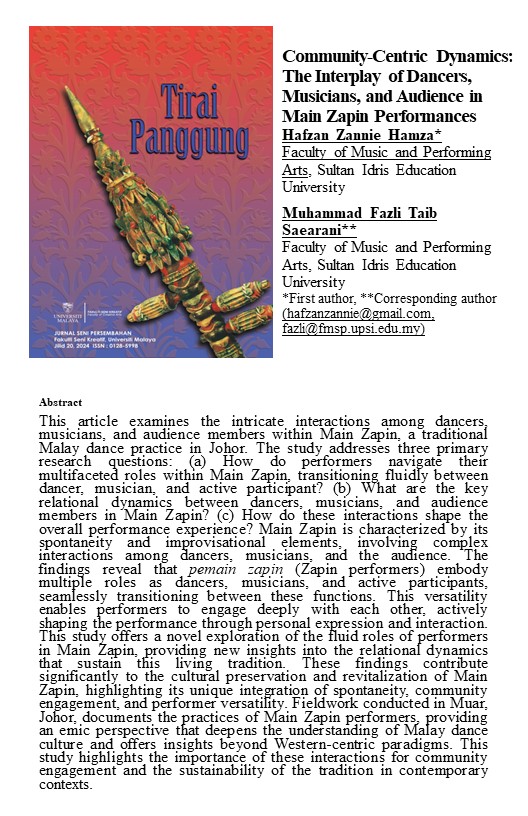Community-Centric Dynamics: The Interplay of Dancers, Musicians, and Audience in Main Zapin Performances
Main Article Content
Abstract
This article examines the intricate interactions among dancers, musicians, and audience members within Main Zapin, a traditional Malay dance practice in Johor. The study addresses three primary research questions: (a) How do performers navigate their multifaceted roles within Main Zapin, transitioning fluidly between dancer, musician, and active participant? (b) What are the key relational dynamics between dancers, musicians, and audience members in Main Zapin? (c) How do these interactions shape the overall performance experience? Main Zapin is characterized by its spontaneity and improvisational elements, involving complex interactions among dancers, musicians, and the audience. The findings reveal that pemain zapin (Zapin performers) embody multiple roles as dancers, musicians, and active participants, seamlessly transitioning between these functions. This versatility enables performers to engage deeply with each other, actively shaping the performance through personal expression and interaction. This study offers a novel exploration of the fluid roles of performers in Main Zapin, providing new insights into the relational dynamics that sustain this living tradition. These findings contribute significantly to the cultural preservation and revitalization of Main Zapin, highlighting its unique integration of spontaneity, community engagement, and performer versatility. Fieldwork conducted in Muar, Johor, documents the practices of Main Zapin performers, providing an emic perspective that deepens the understanding of Malay dance culture and offers insights beyond Western-centric paradigms. This study highlights the importance of these interactions for community engagement and the sustainability of the tradition in contemporary contexts.

